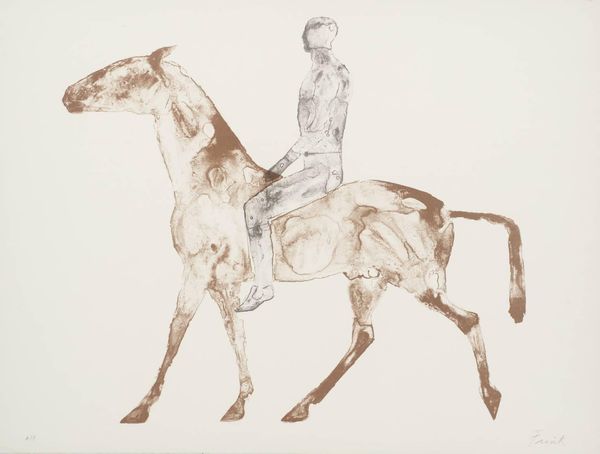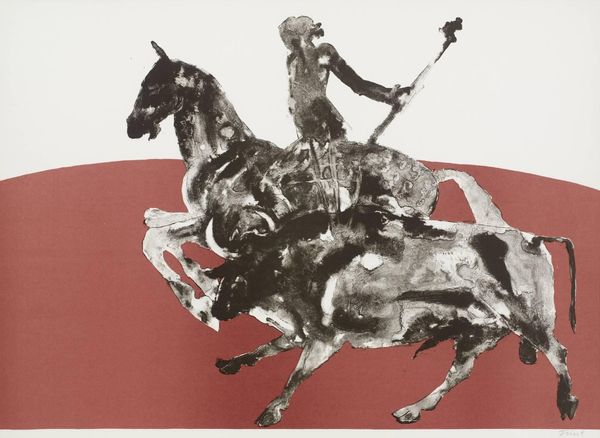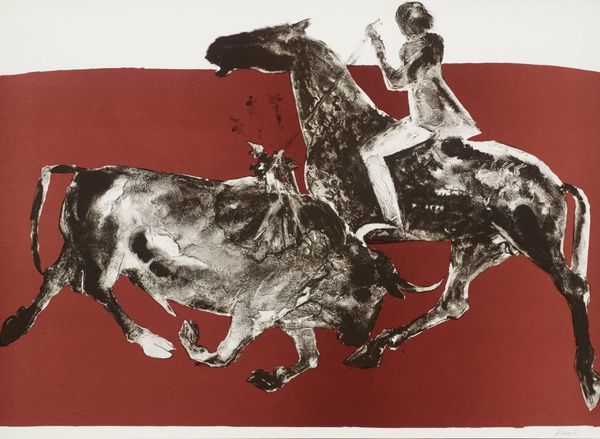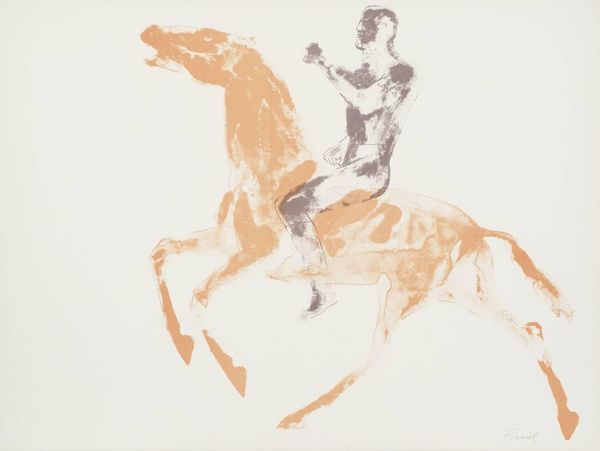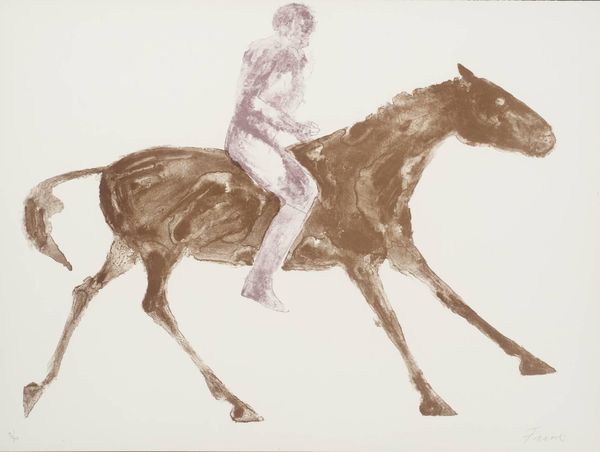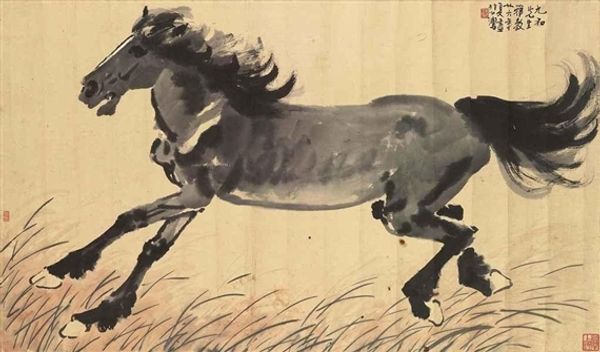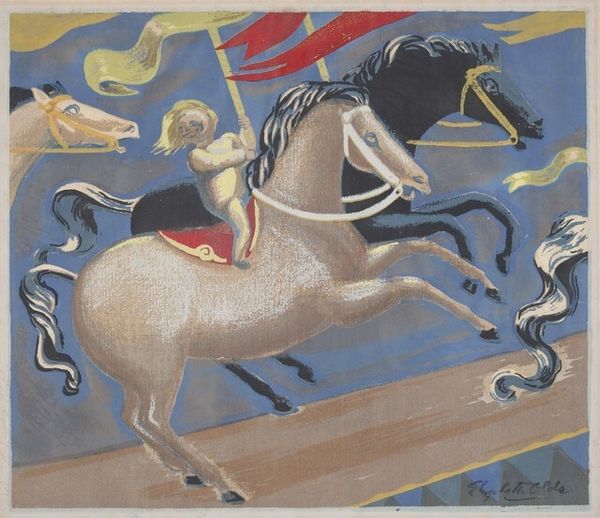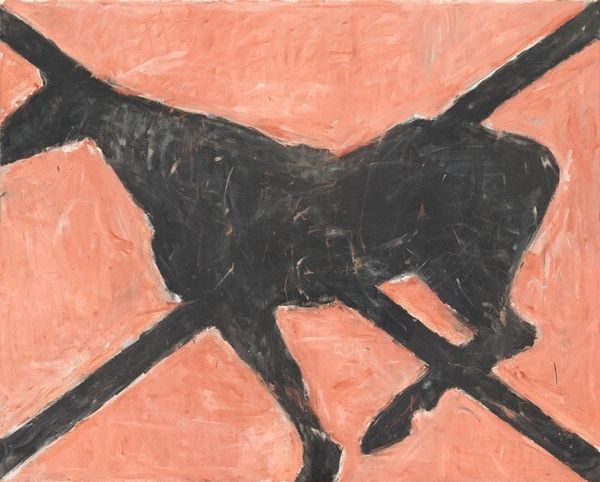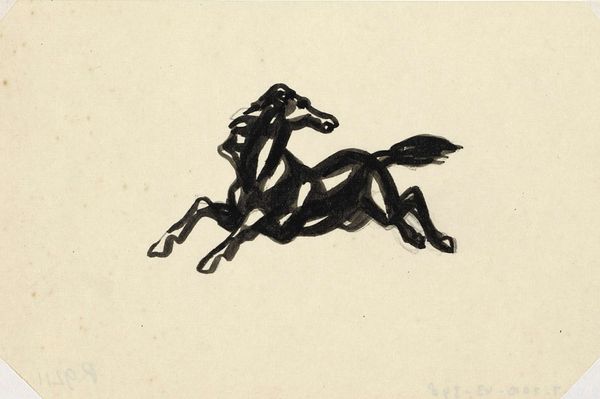
painting, print, acrylic-paint
#
contemporary
#
acrylic
#
painting
# print
#
landscape
#
acrylic-paint
#
figuration
Dimensions: left panel: 64.5 x 90.2 cm (25 3/8 x 35 1/2 in.) overall size: 64.8 x 180.3 cm (25 1/2 x 71 in.)
Copyright: National Gallery of Art: CC0 1.0
Curator: Mary Frank's "The Chase," dating back to 1983, arrests the eye with its stark simplicity. A darkly painted horse surges across the space, burdened with the unsettling figure of a man clinging to its back. Editor: It hits you, doesn't it? The immediate impression is visceral, a sense of urgency and imbalance. The colors are so subdued save for the rider's lurid, raw flesh. Curator: Precisely. The context here is crucial. Frank, known for her exploration of female archetypes and vulnerability, seems to invert that here, focusing instead on a male figure almost desperate in his pose. The piece was executed using acrylic and printmaking techniques; how do you think those mediums contribute to the overall statement? Editor: It's about layering and labor, right? The horse's body looks like a collision of hasty brushstrokes. Its materiality reflects something primal and barely formed, while the man on top seems trapped by both his own flesh and the creature carrying him. It looks rough. I get a sense of frantic physical engagement, perhaps unequal combat, as well. Curator: Yes, there's a distinct rawness. Also note the socio-political element of its date, the mid-80s; think of anxieties around power, dominance, control manifesting at this time and how artists respond. The title invites readings of pursuit, of course, but from whose perspective? Is it the horse, fleeing, or the rider, chasing some elusive goal? Editor: Maybe the horse *is* that goal. We’re often chased by material objects. It seems relevant given that acrylic and print technologies – each having different values relative to other art-making materials at the time of creation – play an important role. And perhaps it's about both? Curator: It’s difficult not to think about her own history. Perhaps, too, she comments on historical representation of nude forms, playing off ideas about vulnerability? The dynamic form seems almost like a stage for some unspeakable act of violence. Editor: And that physicality, the paint, the layering, becomes key to understanding that act, the constant push and pull embedded within our very making. It's disturbing but insightful. Curator: Indeed. A deeply compelling work that prompts introspection on themes of ambition, desperation, and our very relationship with each other, no? Editor: Right. "The Chase" becomes a symbol itself for both creation and consumption. Heavy, yet strangely poignant.
Comments
No comments
Be the first to comment and join the conversation on the ultimate creative platform.

